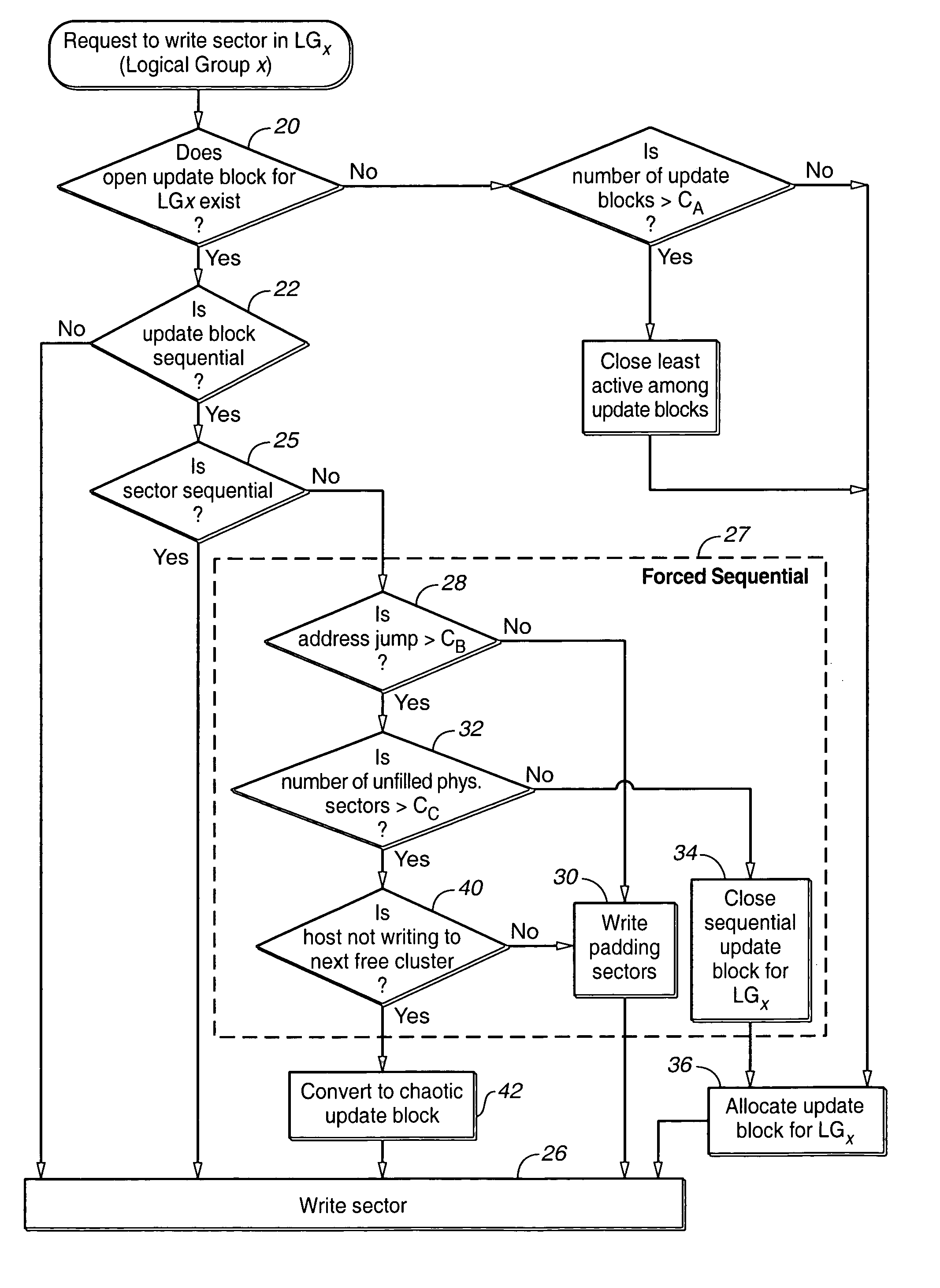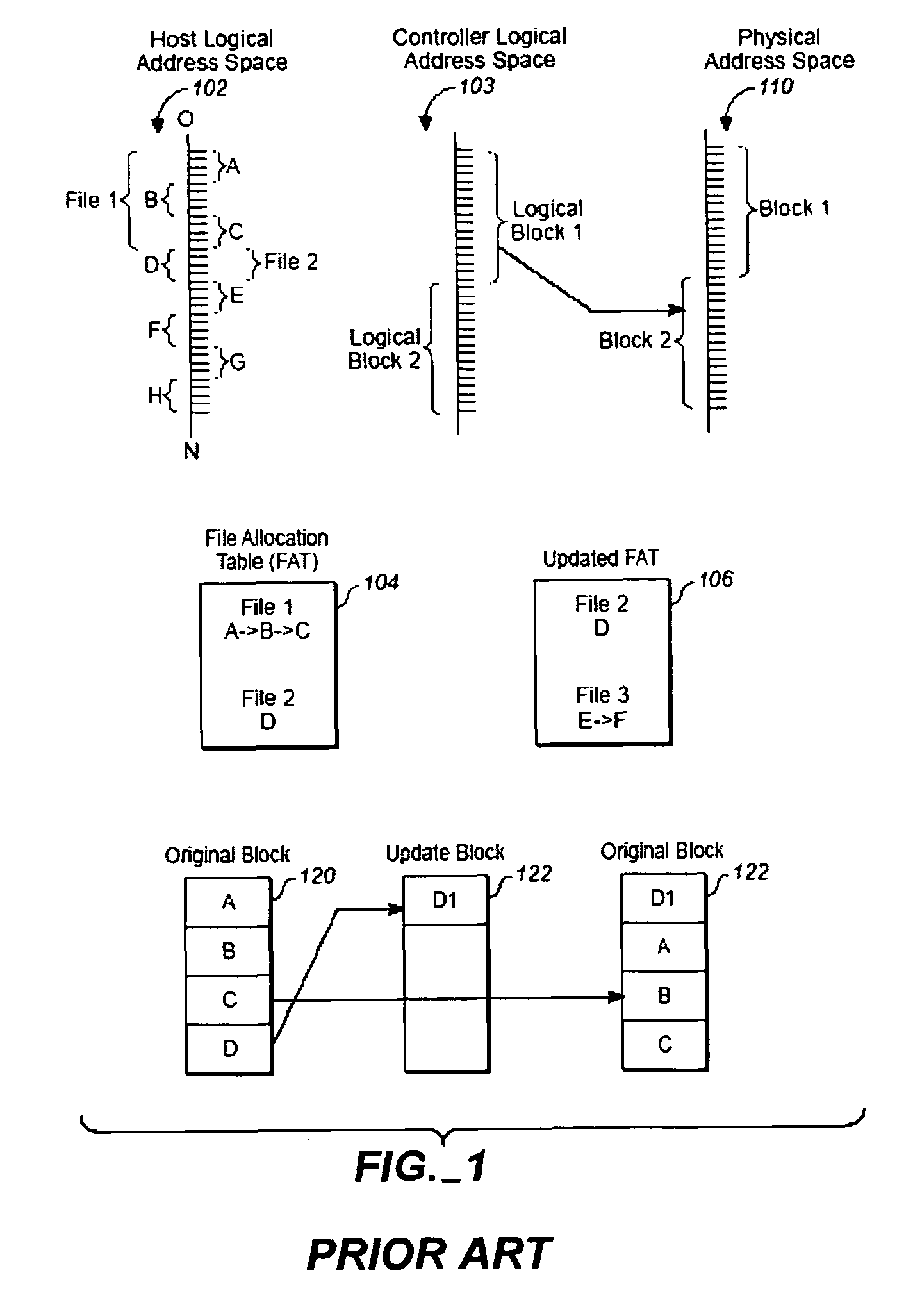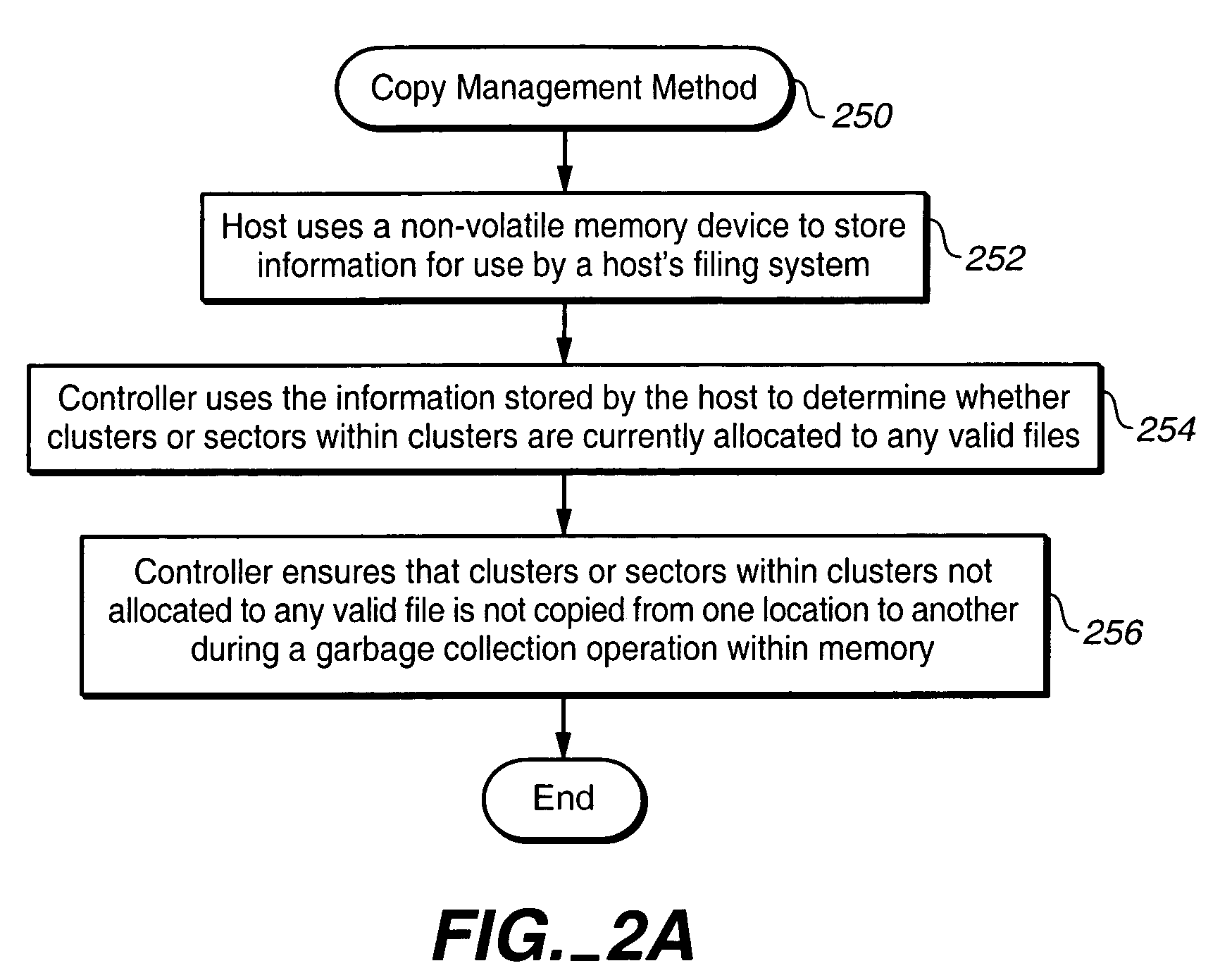FAT analysis for optimized sequential cluster management
a cluster management and cluster technology, applied in the field of data storage systems, can solve the problems of not being aware of the logical organization used by the host, not considering, and not knowing the host's logical organization, etc., to reduce the efficiency of such operations, save space in the memory array, and store data more efficiently
- Summary
- Abstract
- Description
- Claims
- Application Information
AI Technical Summary
Benefits of technology
Problems solved by technology
Method used
Image
Examples
Embodiment Construction
[0044]The invention pertains to techniques for managing data in a non-volatile memory system (e.g., Flash Memory). In accordance with one aspect of the invention, a controller can use information relating to a host's file system, which is stored by the host on non-volatile memory, to determine if one or more clusters (one or more sectors within one or more clusters) are currently allocated. As will be appreciated, the controller can use the information relating to the host's file system, among other things, to ensure that one or more clusters (or one or more sectors within the cluster) are not copied from one location to another location in the memory, for example, during a garbage collection cycle. As a result, some unnecessary operations (e.g., copying data), which are conventionally performed, can be avoided and system performance can be enhanced.
[0045]It will also be appreciated that the controller may directly use the information normally written by the host in a File Allocatio...
PUM
 Login to View More
Login to View More Abstract
Description
Claims
Application Information
 Login to View More
Login to View More - R&D
- Intellectual Property
- Life Sciences
- Materials
- Tech Scout
- Unparalleled Data Quality
- Higher Quality Content
- 60% Fewer Hallucinations
Browse by: Latest US Patents, China's latest patents, Technical Efficacy Thesaurus, Application Domain, Technology Topic, Popular Technical Reports.
© 2025 PatSnap. All rights reserved.Legal|Privacy policy|Modern Slavery Act Transparency Statement|Sitemap|About US| Contact US: help@patsnap.com



